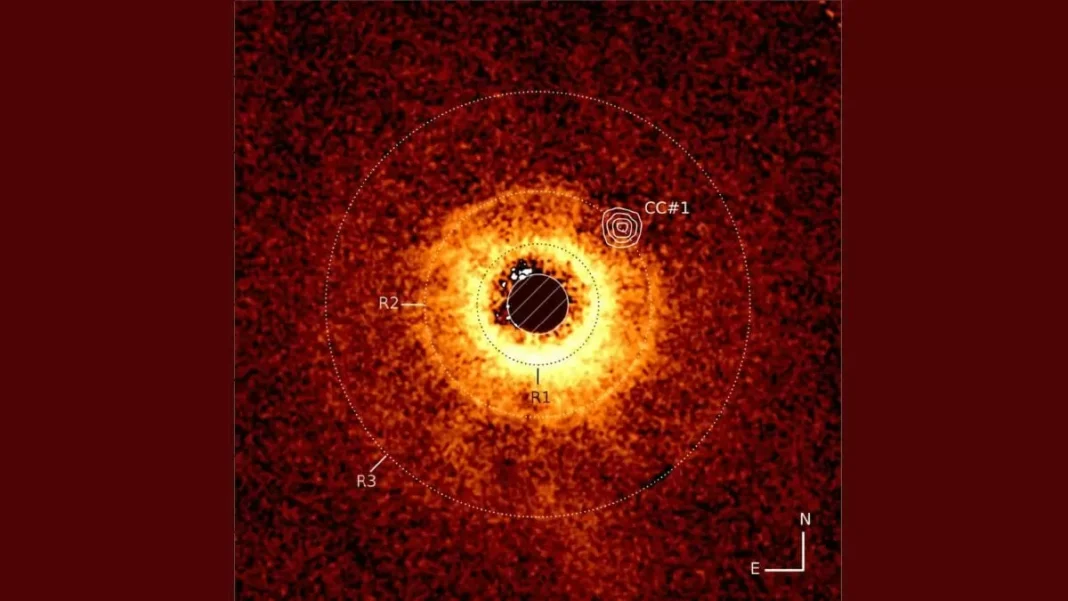NASA’s James Webb Space Telescope has once again made history by capturing its first direct image of a newly discovered exoplanet, TWA 7 b. This remarkable achievement marks a major milestone in the field of astronomy and opens up new possibilities for studying distant worlds.
The TWA 7 b is a Saturn-mass exoplanet that orbits the young star TWA 7, located approximately 370 light-years away from Earth. What makes this discovery even more remarkable is that the planet was identified using a coronagraph, a specialized instrument that blocks out the bright light of a star to reveal fainter objects around it.
With the help of this advanced technology, the James Webb Space Telescope was able to capture the image of TWA 7 b embedded in the dusty ring system of its host star. This is the first time a planet has been directly imaged using a coronagraph, making TWA 7 b the smallest exoplanet ever to be seen directly.
The discovery of TWA 7 b is a testament to the capabilities of the James Webb Space Telescope, which is the successor to the iconic Hubble Space Telescope. This state-of-the-art telescope is equipped with advanced instruments and technologies that allow it to observe the universe in ways that were previously impossible.
One of the main goals of the James Webb Space Telescope is to search for and study exoplanets, which are planets that orbit stars other than our Sun. This is an important area of research as it helps us understand the diversity of planets in our galaxy and the potential for life beyond our solar system.
The TWA 7 b is a particularly interesting exoplanet as it is still in its early stages of formation. It is estimated to be only 10 million years old, which is relatively young compared to the age of our own solar system at 4.6 billion years. This makes TWA 7 b a valuable target for studying the processes involved in planet formation.
The discovery of TWA 7 b also sheds light on the role of dusty rings in the formation of exoplanets. These rings are believed to be the remnants of the protoplanetary disk from which planets are born. By studying TWA 7 b and its dusty ring system, scientists hope to gain a better understanding of how planets form and evolve.
The James Webb Space Telescope’s ability to directly image exoplanets is a significant advancement in the field of astronomy. Previously, most exoplanets were detected using indirect methods, such as measuring the wobble of a star caused by the gravitational pull of an orbiting planet. Direct imaging allows scientists to study exoplanets in more detail, providing valuable insights into their composition, atmosphere, and potential habitability.
The discovery of TWA 7 b is just the beginning for the James Webb Space Telescope. With its powerful instruments and unprecedented sensitivity, this telescope is expected to make many more groundbreaking discoveries in the years to come. It will continue to push the boundaries of our understanding of the universe and inspire future generations to explore and discover the wonders of space.
The successful capture of the first direct image of TWA 7 b is a testament to the hard work and dedication of the team behind the James Webb Space Telescope. This achievement would not have been possible without the collaboration of scientists, engineers, and technicians from NASA, the European Space Agency, and the Canadian Space Agency.
The James Webb Space Telescope has truly revolutionized our understanding of the universe and has opened up new frontiers in space exploration. As we continue to unravel the mysteries of the cosmos, the discoveries made by this remarkable telescope will pave the way for future missions and inspire us to reach for the stars.
In conclusion, the first direct image of TWA 7 b captured by the James Webb Space Telescope is a major milestone in the field of astronomy. This discovery not only showcases the capabilities of this groundbreaking telescope but also highlights the potential for future discoveries and advancements in our understanding of the universe. The TWA 7 b is a small planet with a big impact, and its discovery is a testament to the power of human curiosity and the endless possibilities of space exploration.


